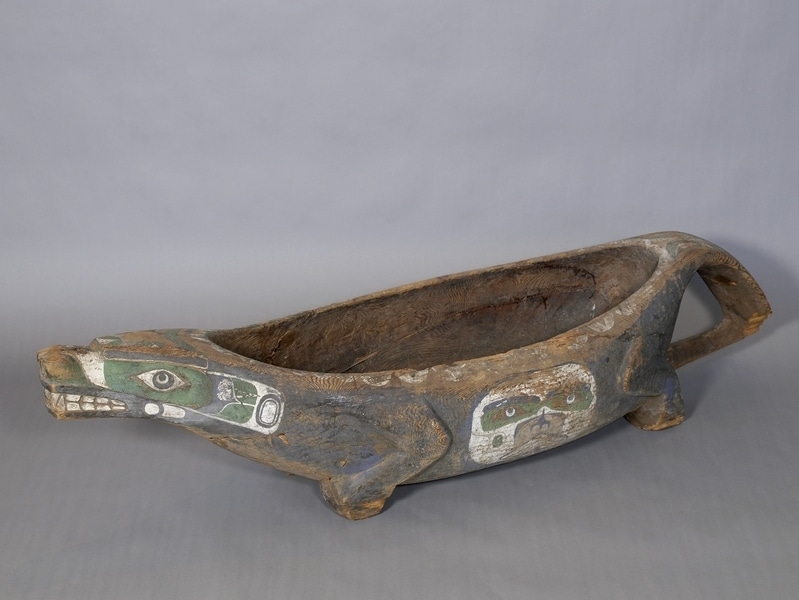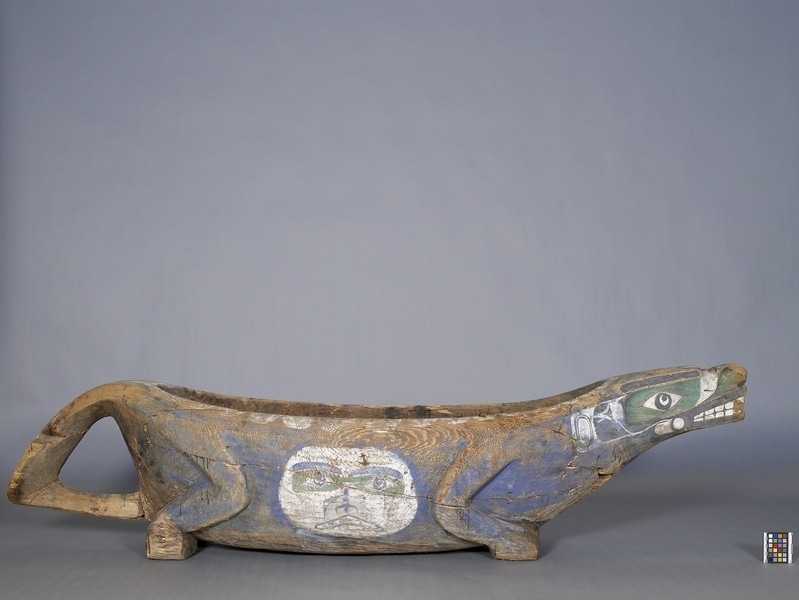Feast Dish Item Number: A6936 from the MOA: University of British Columbia


Description
Long, wooden feast dish carved in the shape of an animal, with a deep, oval shaped bowl in the middle. The tail is paddle shaped and curves downward to join the body; it’s legs are carved in relief against the body, the feet support the bowl. An abstract design is painted on the tail. The exterior rim of the dish is painted with a continuous pattern of alternating opposing pairs of white semicircles with inset green triangles. Both sides of the object are painted with a large human face with a downturned mouth - the face is outlined in blue on a white background. Has been badly broken, and repaired.
History Of Use
Feast dishes were used primarily to hold food served to guests at important social occasions. Great “house dishes” could hold immense quantities of food. They also held their own names and histories, and were among the most valued privileges passed on through marriage and inheritance.
Cultural Context
ceremonial; potlatch; status; privileges
Narrative
Letter in file says it belonged to the seller's wife's great-grandfather.
Iconographic Meaning
Represents Beaver, Tsa-ow
Item History
- Made in British Columbia, Canada during 1872
- Collected in Smith Inlet, British Columbia, Canada and Takus, British Columbia, Canada
- Owned by Chief Edward Walkus before July 7, 1953
- Received from H. R. MacMillan (Funding source) and Chief Edward Walkus (Seller) on July 7, 1953
What
Who
- Culture
- Kwakwaka'wakw
- Previous Owner
- Chief Edward Walkus
- Received from
- H. R. MacMillan (Funding source) and Chief Edward Walkus (Seller)
Where
- Holding Institution
- MOA: University of British Columbia
- Made in
- British Columbia, Canada
- Collected in
- Smith Inlet, British Columbia, Canada and Takus, British Columbia, Canada
When
- Creation Date
- during 1872
- Ownership Date
- before July 7, 1953
- Acquisition Date
- on July 7, 1953
Other
- Condition
- fair
- Accession Number
- 1974/0001